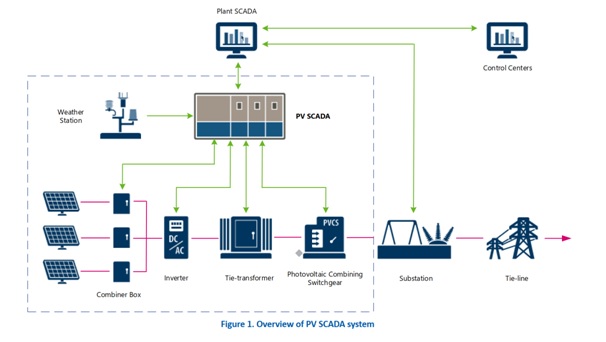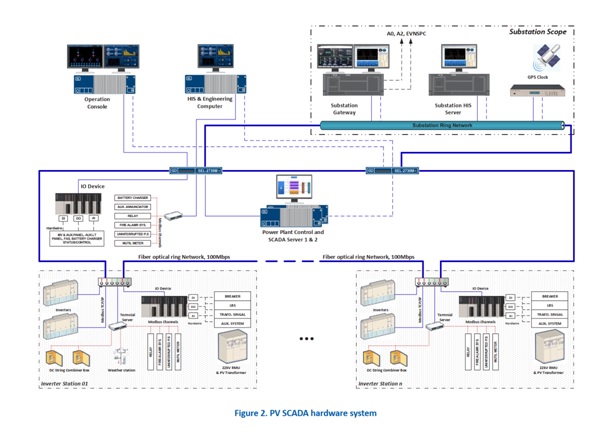They gather and monitor data, control plant operations, and ensure compliance with grid standards. These systems provide real-time insights, enable remote management, and are designed for high reliability. A well-engineered PV SCADA system is vital for ensuring the optimal and stable operation of a solar power plant throughout its lifespan.
Solar Plant Single line diagram Overview:-

A PV SCADA system consists of three primary components:

The PV Power Plant Controller (PPC) is a key component of a solar power plant, ensuring its efficient and stable operation while adhering to grid regulations. It is designed to be versatile and compatible with various inverter brands.
The PPC uses closed-loop control mechanisms and communicates with inverters using industrial protocols (Modbus RTU, DNP3, IEC 61850, IEC 60870-5-104) to achieve precise and rapid control. Essentially, the PPC acts as the brain of the solar power plant, ensuring its seamless integration into the grid and optimal performance.
In essence, the PV SCADA system offers a flexible, efficient, and compliant solution for managing solar power plants.